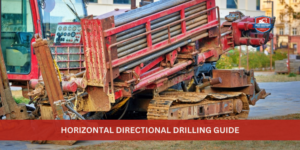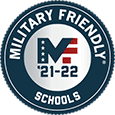Like all heavy equipment, cranes can pose a safety threat when not used properly. Crane operators must take the proper precautions necessary to ensure equipment and worker safety. Below are ten ways you can practice crane safety at every stage of operation.
Table of Contents
10 Quick Tips for Safe Crane Lifts
Here are our top ten tips to ensure safe crane lifts.
1. Plan the Lift
Start by evaluating the work site conditions. What is the terrain like? What is the weather like? If conditions are potentially hazardous, you may need to postpone the project until they improve.
Next, determine the weight of the load. Know how much you plan to carry. Finally, check the crane’s load capacity. How much weight can the crane carry? Every crane has a lift limit. If a load exceeds the crane’s lift limit, the crane could get damaged or drop the load entirely—putting workers below at risk of injury and even death. Adjust loads accordingly.
2. Choose the Right Equipment
An essential part of crane lifting safety is selecting the right type of crane for the job at hand. Specific cranes are designed for specific applications. Before starting a project, make sure you’re using the correct type of crane for the intended application. This step will increase efficiency and ensure safety.
You should also ensure that the crane is properly maintained throughout its useful life. All equipment should meet current safety standards outlined by OSHA (Occupational Safety and Health Administration). Routine inspections and maintenance reduce the risk of equipment failure and accidents.
3. Communicate Effectively
When lifting heavy equipment, proper communication is essential. Establish clear communication between the crane operator and other workers on site. Follow all communication protocols, which include using standardized hand signals. These hand signals communicate information like what direction the crane should travel in and when to halt operation. You can use radios and other communication devices when necessary.
All workers on a job site should be on the same page. Always over-communicate rather than under-communicate. Never assume the crane operator knows exactly what to do without direction. The bottom line is to stay focused. Distractions lead to mistakes, and mistakes lead to injuries.
Elevate Your Career with Tower Crane Certification
Become a certified Tower Crane Operator in two weeks. Gain the skills and knowledge to operate towering cranes, opening doors to lucrative job prospects and a bright future in the construction industry.
Apply Now4. Position the Load Safely
Position the load within the crane’s load capacity. In other words, make sure the crane you’re using can handle the intended load. You want to avoid overloading the crane, as this can result in equipment failures, injuries, and even fatalities. Know how to read load charts, as these are a helpful guide to knowing how much weight a crane can carry.
Cranes with a higher load radius are more likely to tip over during operation. Outriggers are helpful in these scenarios because they enable the crane to carry a heavier load. Ensure the load is stable and balanced before proceeding.
5. Secure the Load
Double-check that all connections are secure before beginning crane operation. Ensure the load is properly secured before lifting. Ensure that outriggers, stabilizers, and other safety devices are positioned properly. These features keep the crane from tipping over while lifting a heavy load. Outriggers should always be fully extended for optimal stability. Keep at least one set of eyes on the load at all times.
6. Follow Safe Operating Procedures
Follow all of the crane manufacturer’s instructions. Each crane has its own unique controls and other features. The operator manual outlines the crane’s load capacity and explains various safety mechanisms. Use the crane controls carefully, avoiding sudden movements and jerks. Most importantly, pay attention. Staying alert during crane operation can be the difference between life and death.
7. Wear Proper Personal Protective Equipment
Never step onto a heavy equipment job site without wearing the proper personal protective equipment (PPE), which is outlined below:
- Hard hat
- Safety vest
- Boots
- Safety glasses
- Gloves
8. Perform a Visual Inspection
Look thoroughly at every part—including the cab—of the crane before commencing operation. Taking this small step can protect equipment from getting damaged and workers from getting injured. If something looks wrong, it probably is wrong. Make necessary adjustments.
9. Keep the Work Area Clear
Establish a safe work zone around the crane. Remove any objects that could obstruct the crane’s movement—like wires and large rocks—and define a clear path. Keep workers and bystanders clear of the lift area. Workers shouldn’t stand below the load at any point. Use barriers or signage to mark off the work zone so workers do not put themselves in danger.

The Key OSHA Rules for Forklifts
Forklifts make jobs involving heavy lifting easier than ever. They can carry objects that are either extremely difficult or impossible to transport manually, which protects

The Top 10 Industries That Use Cranes on Job Sites
From hoisting heavy cargo to installing power lines, cranes help workers across industries complete essential tasks. Given the weight of cranes and the intricacies involved

The Complete Industrial Guide to Horizontal Directional Drilling
When installing underground pipelines near unique land areas, horizontal directional drilling is a surefire way to minimize the negative environmental impact. Let’s take a closer
10. Stay Up to Date on Training
Ongoing heavy equipment training for crane operation is necessary to meet efficiency and safety standards. Stay informed about current industry standards and OSHA safety guidelines. All crane operators must have their Certified Crane Operator license from the NCCCO. Renew your heavy equipment operator certifications as needed.
What Is the Importance of Crane Training?
Heavy equipment operators are in high demand. Employers need skilled workers with the proper training and certifications. Everything from city infrastructure to commercial properties are being built nationwide. They also require repairs and maintenance over time.
Find a Crane Operator Training School Near You
Are you ready to become a heavy equipment operator? It all starts with the right training for heavy crane lifting.
At Heavy Equipment Colleges of America (HEC), we have the training programs you need to take the next step in your career. From tower cranes to lattice boom crawler cranes and everything in between, our courses cover a wide variety. Click the button below to start the enrollment process today.




